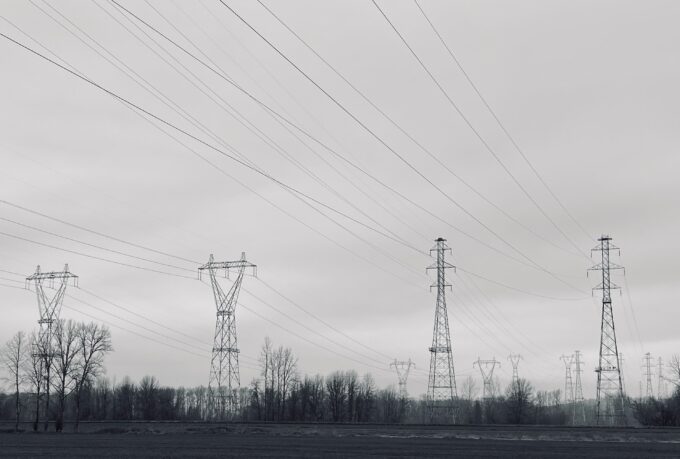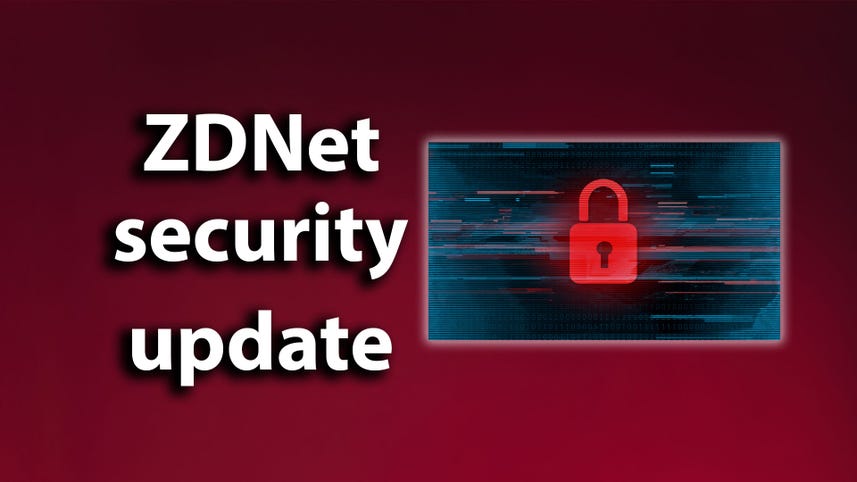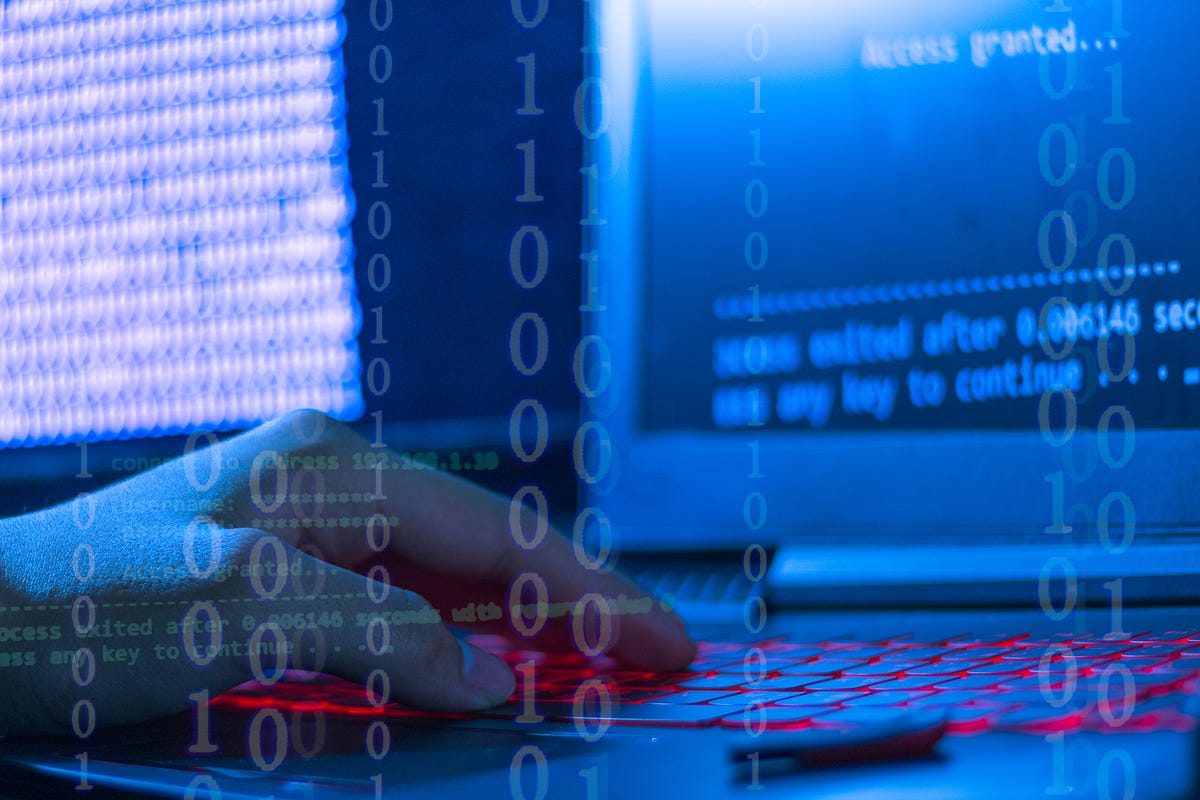
Power corridor near Rainier, Oregon. Photo: Jeffrey St. Clair.
I
In the winter of 2001, the New York Committee for Occupational Safety and Health (NYCOSH)—an organization established by trade unionists and health and safety activists to promote the implementation of the 1970 Occupational Health and Safety Act (OSHA) in the workplace–visited the Village Voice to measure the electromagnetic fields in some of the work areas.
In 1979, Nancy Wertheimer and Ed Leeper’s groundbreaking study had found a compelling association between childhood cancer and the “electrical current configuration” of houses in Denver, Colorado–it was followed by other studies with similar results. In the succeeding decades, EMFs received a fair amount of media attention. Those directly concerned with the problem—such as public health advocates and residents of communities where children lived near power lines—complained no action was being taken. The utilities countered with ridicule and accusations of fearmongering.
In June of 2001, the International Agency for Research on Cancer (IARC), an agency of the World Health Organization (WHO), finally weighed in, classifying EMFs as “possibly carcinogenic” (a 2b hazard) on the basis of “limited” evidence concerning childhood leukemia. However, many experts were unhappy with this nebulous 2b classification and believed the available evidence warranted a stronger response.
”Four milligauss is when you have to begin to worry,” the NYCOSH representative said. The reading he found at my desk was 11 mg. But at the editorial reception desk facing the second-floor elevator it was 15mg (about the average occupational dose of a utility lineman), and higher still upstairs near a refrigerated area containing the Voice’s old main-frame computer.
Although these unexpectedly high readings didn’t set off any alarm bells at the Voice, as soon as I purchased an F.W. Bell triaxial gaussmeter, a number of coworkers asked to borrow it so they could quantify the newly revealed risk in their apartments. (Of course I had surveyed my own and was reassured to find the levels there safely below 1 mg.)
However one evening on my way home from work, as I stood on the sidewalk waiting for the light to change, I happened to glance down at the meter–and noticed it registered an alarming 30 mg–and when I got to the middle of the street–a phenomenal 82 mg!
Outside the Barnes and Noble on Union Square, the EMFs measured 65 mg, and in the vestibule–where a mother and child huddled to get out of the cold–25 mg. A guard stationed just inside the entrance bathed in a steady field of 15 mg, and not until I reached the middle of the store did the large black digits on the face of the gaussmeter drop to between 1.1 and 1.2 mg—a reassuringly low level. But in the center of the main floor of ABC Carpet the EMF measurement was 12 mg.
On every street and sidewalk, the EMFs far exceeded supposedly safe levels—sometimes by 20 times or more.
When I phoned the NYCOSH rep the next day to describe the details of my evening stroll, he just laughed and said, “I know.” Occupational health and safety experts, it turns out, had long been aware that high-current wires under the city streets–leading into and out of step-down transformers under virtually every city block–created EMF “hot spots” all over town.
However, he said a threshold appears to be reached beyond which higher fields don’t necessarily have an increased biological effect.
At any rate, given the intense controversy over power lines in suburban schoolyards—it seemed odd the (unshielded) ones beneath the city streets and sidewalks had escaped public attention. It occurred to me to write an article about it for the Voice.
I found an editor who was enthusiastic about the idea. “Jeezus,” he said. “That sounds like a great story.” But he insisted I pitch it to the editor-in-chief myself.
He became serious and matter-of-fact after I told him I was given a 1000-word assignment—approaching it with total gravity, as though it were his own byline at stake.
“I forgot to mention when we spoke yesterday–there’s someone you need to contact right away. His name is Roy; he’s from an organization called the Chelsea Alliance—they’re fighting to prevent Con Edison from constructing a block-long power plant [in a semi-residential area, on the site of a popular flea market]. Their objection to the substation is that it would introduce these high electromagnetic fields you’re taking about.”
“I should definitely mention it in my piece,” I said.
“Mention it? I’d think you’d want to do more than mention it. . . . This isn’t a science journal, you know—it’s a newspaper. I can’t see anything so far that would make your article especially timely now. For the Voice, you’ll need a hook to make it relevant.”
(To me, the existence of these fields all over the city was as “newsy” as you could get.)
When I called Roy, he described the struggle his group had been waging against Con Ed for the better part of a decade. He was surprised to hear about my city sidewalk measurements, having thought such high EMF levels occurred only in the vicinity of substations. I arranged to meet him outside his building.
He had given me the address of a dilapidated walkup on West 24th St. When I arrived I entered the vestibule, rang the bell, and was immediately buzzed in.
As I started up the shabby gray carpeted steps, a sneakered man with shaggy brown hair came bounding down.
I said, “I’ve brought along the gaussmeter.”
He asked if he could borrow it for a moment to check out his apartment and was back in a matter of seconds, tripping down the steps, and I followed him out the door.
It’s 26 milligauss here,” he said standing just outside the entrance and gestured toward an empty parking lot.
“That’s where Con Ed wants to put the substation. Unfortunately it’s going to abut the wall of my apartment. .. . Con Edison claims there will be about 45 milligauss coming out of the walls of the substation, but they can shield it and get it down to 4 mg.”
“Four milligauss–that’s still the dose they say may cause cancer.”
“I know, and here’s the thing . . . Back in 1992, at a hearing on a proposal to expand another substation at 40thStreet, Con Ed estimated there would be 125 mg fields coming from the rear wall. And they were claiming then that they didn’t have the technology to shield it.”
“So this 45 mg estimate they are giving you is pure bullshit?”
“That would appear to be the case.”
“And the technology to shield it still isn’t there?”
“Oh maybe, I don’t know. But it would be very expensive—and I just can’t see Con Ed footing the bill. Most metals won’t do the trick—you need to have just the right combination of aluminum sheets and aluminum alloys or steel, ferromagnetic and other metals. It’s difficult work and very often isn’t done properly.”
“And if it weren’t done properly?”
“They’d just say, ‘Sorry.’ We would have no recourse to agencies or to regulations of any kind. The ones that are currently on the books deal only with acute effects of high-voltage transmission lines.”
We slowly began walking west on 24th Street, toward a growing crowd of young people. The building they are leaning and standing in front of is the Gay Men’s Health Crisis. “Sixty-five milligauss,” Roy says, glancing at the meter.
“Yo, Roy,” someone says. Everyone turns and looks over. But Roy is preoccupied, due perhaps to the high street-level readings and his sudden understanding that this proposed substation is but the head of an octopus in an endless sea of these creatures.
Altogether my article is shaping up nicely. I have discussed it on the phone with Louis Slesin, the editor of Microwave News (microwavenews.com), who is very supportive and faxes me copies of research studies. By contrast, Con Ed’s response comes across as bland, evasive boilerplate.
Nevertheless, as I keyboard the piece into the Voice’s Atex system and then message the editor, my optimism is tempered by a slight feeling of dread.
The next morning, when I call up my article, a note from him at the top, highlighted in bold caps, gives me a jolt:
KATHY, I THOUGHT DURING OUR DISCUSSION WE AGREED THAT THE PUBLIC HEARING ABOUT THE SUBSTATION WAS TO COME AT THE BEGINNING OF THE PIECE. YOU PUT IT AT THE END, ALMOST AS AN AFTERTHOUGHT. I CAN’T EMPHASIZE STRONGLY ENOUGH THAT THE SUBSTATION HAS TO BE THE FOCUS OF YOUR ARTICLE. I SUGGEST YOU MOVE IT TO THE LEDE.
I call and leave a brief message on his voicemail.
The phone rings around 10:30.
“Kathy, I got your message. I can’t believe you’re doing this. Believe me there’s absolutely no way they will run your article without a news hook. I thought we’d been over this. The hearing absolutely has to come first.”
While hardly prepared to abandon my original theme–including the question of how EMFs under city sidewalks might affect the homeless—I revise the piece. I put the hearing in the lede and then go on to describe the substation a bit further down. The final edit proceeds smoothly. The editor is cordial and reserved and when we’ve finished he tells me I’ve written a fine piece.
On Friday evening, it is in the features queue.
On Monday, as soon as I log on, I check just to be sure. Yes, 5Deacon—which is how they’ve slugged my piece—is running.
Around four or five, I go over to Starbucks, and when I come back, routinely check the lineup again—but this time I have to look twice. My piece, “5Deacon,” is in notes form—which means it’s been placed on hold.
My first response is to call the editor. I dial his number, get his tape. Unable to continue copy editing, I make my way over to Starbucks again, plant myself down in the window, watch the animated crowds, and mechanically circle the block. When I get back to the Voice, he has still not returned my call.
I phone a second time. This time he picks up; his hello is groggy and breathless.
“I got your message,” he says. “It sounds as if they’re holding your piece.”
I head for the smoker—it truly reeks in there, but it’s the only place you can go to sit down. I come upon a young editor.
He says, “You look really beat.”
I tell him my article was killed.
“Maybe they’ll run it next week.”
“It won’t be timely then. The hearing will be over.”
“Why don’t you just put it on the Web site?”
Was it really as simple as that? It certainly would have been lovely seeing my byline in the print edition, but these days readers did increasingly turn to the paper’s Web site.
When the editor comes in, I say, “Look, can’t we just run it on the Web?” He says, “Huh? . . . Oh sure, no problem.” So at nine o’clock that evening, my piece appears on the Voice’s Web site as the lead feature. It’s the best way anyone could have chosen to publicize the hearing.
II
Flash forward to 2022. A mammoth truck pulls up in front of our house. Three men wearing shirts with IBEW logos get out; they explain they’re putting in new utility poles—which they proceed to do.
It’s heartening to find organized workers at one’s doorstep–I mention the EMFs emitted from the lines. Living in involuntary proximity to a distribution power line for the past 20 years, there’s been no escape from EMFs. I’ve read how they cause oxidative stress; and can reasonably be presumed to result in adverse health effects if the exposures are prolonged or chronic. One of the men says, “It’s not electromagnetic radiation you have to worry about. It’s microwaves and radiofrequency radiation.” The others agree.
Radiofrequency (RF) radiation from long-term cell phone use is associated with gliomas and acoustic neuromas–I know that–but what does this have to do with the power line? [Months later–after noticing small metal boxes popping up on utility poles and learning that Verizon and some of the other networks are rolling out 5g here on the North Fork I finally understand. As each and every cell phone company installs its own separate antennae every two or three blocks–there will be no escape from interconnectivity– or RF radiation–in the coming “Internet of Things.”]
Standing just under these new 5g antenna boxes with my own Cornet Electrosmog meter (which measures RFR (coming just before microwave radiation on the gamut ranging from EMF to gamma radiation), I observe the meter shows no response. Could it be the antennae are not yet hooked up? On the other hand, when the meter is placed near my 6s iPhone, it flashes wildly—triple-red, triple-yellow, yellow-red, yellow—lighting up like a Christmas tree whenever I click on any new icon or a Web site. Eventually, as I settle down to read, it settles back on green (safe) as long–as I do not initiate any new activity. My husband’s iPhone 7, however, is another matter—it keeps blinking red for some time after he shuts it off. The really frightening thing—on both phones: Even at a distance of two or three feet, the meter’s red light (danger signal) flashes. It’s been pointed out cell phone companies don’t own up to the true amount of RF radiation their phones are emitting (measured in SAR [Specific Absorption Rate] testing, which uses models of the human head and body filled with liquids that simulate the RF absorption of different tissues)—even their self-reported measurements are higher than what the FCC recommends (see Sam Roe, Chicago Tribune, August 21, 2019). And the newer phones appear to be just as bad. Some speculate the recent unexplained rise in colorectal cancer among young people could be related to habitually carrying phones in their pants pockets.]
On top of all this, I still worry about EMFs from the low-voltage distribution line just outside my door. The WHO maintains that current research does not confirm the existence of any health consequences.
One of their reassuring “fact sheets,” (Q&A 2016), claims that residential power-line exposure usually falls below 2 mg—and people tend not to reside in the same houses for very long. Aren’t they overlooking all the homes situated near low-voltage distribution lines? It was upon just such homes—in which EMF levels are much, much higher than 2 mg–that Wertheimer and Leeper—and other scientists studying childhood leukemia—built their research.
Louis Slesin, the editor of Microwave News (microwavenews.com)—a Nader-like figure in the realm of low-level radiation–observed a while back that “the public has been misled time and time again . . . by those who are supposed to serve as the world’s experts and to protect us from EMF/RF hazards: the members of the International Commission of Non-Ionizing Radiation Protection, ICNIRP for short.”
The WHO’s 1996 International EMF Project–initiated and managed by Dr. Michael Repacholi–conducted its scientific work in collaboration with the ICNIRP, an independent nonprofit that Repacholi himself also chaired for many years. Critics charge his dogmatic position that EMFs have no biological effect except for a purely thermal effect long put a damper on scientific research. Perhaps it’s not surprising, since from the outset industry was always a partner at the table.
A major article by Mark Hertsgaard and Mark Dowie in the March 29, 2018, issue of the Nation (“How Big Wireless Made Us Think That Cell Phones Are Safe: A Special Investigation”) details how Motorola funded Repacholi’s research when he was director of the WHO’s EMF program. “Motorola’s payments were bundled with other industry contributions and funneled through the Mobile and Wireless Forum, a trade association that gave the WHO’s program $150,000 annually. In 1999, Repacholi helped engineer a WHO statement that ‘EMF exposures below the limits recommended in international guidelines do not appear to have any known consequence on health.’”
A similar pattern of corporate interference recurred in the WHO’s response to RF from wireless communication. In 2000, the IARC Interphone study into possible links between cell phones and two forms of brain cancer received 20 percent of its $24 million budget from wireless trade associations. Although the study found the heaviest cell phone users were 80 percent more likely to develop glioma, the industry’s Cellular Telecommunication and Internet Association managed to convey a sense of ambiguity about the findings when they spun it to the media. And the work of scientists such as Lennart Hardell, whose studies produced important evidence about the effects of cell phone radiation, was denigrated by industry-funded scientists.
Just as industry funding helped prepare the groundwork for EMFs’ classification in 2001 as a 2b “possible” carcinogen, it also paid off big-time in 2011—when the WHO met in Lyon, France, to discuss how to classify the cancer risk posed by cell phones. With industry-funded experts on its working group—and their additional “invited specialists” advising the group–the working group classified cell phones as only a 2B (possible)— and not a 2A (probable)–carcinogen. In the decade leading up to this, industry-funded scientists had placed pressure on colleagues—and attacked those investigating the effects of radiation.
As Hertsgaard and Dowie write, “That result [the 2b classification] enabled the industry to continue proclaiming that there was no scientifically established proof that cell phones are dangerous.”
In 2016, a U.S. government initiative— the National Toxicology Program (NTP) strengthened the case for reclassifying RF radiation as a “probable” carcinogen when it found that male rats exposed to cell-phone radiation developed cancer. But two years later, in 2018, when a former drug company executive took over leadership of the program under the Trump administration, the senior scientist directing the study backtracked; and using essentially the same data, they claimed there wasn’t any risk.
As the actual signals and durations relevant to chronic exposure from mobile communication evolve and greatly intensify—and remain unexamined–a precautionary approach is called for. A significant number of experts believe that EMF and RFR likely pose health risks and more research is needed. Yet the government/industry policy is to roll out 5g first and investigate later, if at all.
Several months back, I emailed Louis Slesin about electric cars–an integral part of our renewable future—that will hopefully help to save the planet from fossil fuels. I asked him if manufacturers will make any effort to shield EC passengers (I’ve read they can be exposed to complex combinations of RFR and microwaves as well as EMFs), and does it matter whether or not they do.
Louis Slesin: “At this point no auto company that I am aware of even acknowledges the issue. The only company I have ever heard of taking it seriously is Volvo and that was a long, long time ago.
“The richest man on the planet is building cars that will expose passengers to complex EMFs. And there is no evidence that he or his company is taking the problem seriously. If Musk spent as much time even considering the issue as he does cryptocurrencies, we might have some answers!
“As far as I can tell he and Tesla simply ignore the issue, as do the other auto makers.
“In the future, I would bet, all cars will be electric.
“And you are right about the field effects being non-linear. I am working on a story about this right now. A paper came out a couple of weeks ago that clearly show that the lowest fields can sometimes cause the largest effects.
“Non-linear effects came up during the peer review of the NTP study [The $30 million National Toxicology Program animal study of RF-cancer link].
“As for your last Q, whether any of this matters. I don’t know, but it should be investigated.”





